How ‘Gandhi’s Assassin’ used his newspapers to create the environment for independent India’s first act of terrorism
“Who killed Gandhi?” has an easy answer.
A Hindu.
A Brahmin.
A Maratha.
But who was Nathuram Godse?
A tailor from Poona who was also a journalist.
An Editor, who, at 5.17 pm on 30 Jan 1948, crushed the ‘Soul of India’ and smashed the cliche that the pen is mightier than the gun.
The “journalism” of Ramachandra Vinayak Godse, for that was his real name before his nose-ring (nath) gave him the moniker ‘Nathuram’, offers a view of his mind, motives and methods---and his shadowy mentors.
**
In his superb 2022 biography ‘Gandhi’s Assassin’, author Dhirendra K. Jha shows how the newspapers helmed by Godse laid the ground and created the ‘mahaul’ (environment) to kill India's greatest Editor-in-Chief.
Gandhi was many things in his life--activist, lawyer, freedom fighter--but journalism was his longest calling, from 1902-48, when he edited ‘Harijan’, ‘Young India’ and ‘Indian Opinion’.
**
In 1943, Godse and his smoking, drinking, womanizing partner Narayan Apte, a Konkanastha or Chitpavan Brahmin like him, felt the need to launch a newspaper for 3 reasons.
🕉️ To create a source of income
🕉️ To propagate the idea of Hindu ‘rashtra’
🕉️ To make up for the perceived lack of coverage of the activities of Hindu outfits in newspapers at that time
“On 16 January 1944, we discussed this issue in detail and concluded that there was no point in crying over our failure to get our activities covered in the press,” Godse admitted after killing Gandhi.
“We were of the opinion that things would work out only if we brought out our own newspaper and published our activities in it. We therefore decided to start a newspaper and from the next day we began our preparation.”
**
During World War II, newsprint was a scarce commodity. There were restrictions on starting a new publication.
So, the duo obtained permission to revive an old and defunct Marathi title called ‘Agrani’ (Marathi for forerunner) from its original owner and editor, Shri Shikhare.
The first issue of ‘Agrani’ was published on 25 March 1944. Godse was listed as editor; Apte, a former Air Force man, was the general manager.
Tellingly, it carried a photograph of V.D. Savarkar on its masthead.
The paper’s motto was, “Public good, not just popularity.”
Its office in Poona was a ramshackle shed made of bricks. A tent in the compound served as the workplace for the pair and as the “space to conceive and execute their subversive plans”.
**
“We needed at least Rs 20,000 to start the newspaper,” Godse confessed.
“We first approached [Advocate] Savarkar. He had received Rs 200,000 from his followers on his 60th birthday.
"We requested him to give some money for the newspaper. He gave us Rs 15,000 as loan.
"We also collected small amounts of two-three thousand each from several other people.”
**
Besides 'Agrani', two more Marathi newspapers came into existence in 1944 “with the overt backing of RSS”.
One of them was ‘Vikram’, which began publication in Sangli under the RSS chief in Maharashtra and Godse’s mentor, Kashinath Bhaskar Limaye.
The other was ‘Tarun Bharat’ from Nagpur, published by the Narkesari Smarak Mandal Trust, a body close to the RSS.
All three papers shared the same world-view.
🕉️ They were bitterly critical of the Congress
🕉️ They detested Gandhi’s philosophy of non-violence
🕉️ They were opposed to Gandhi’s idea of Hindu-Muslim unity.
And their approach to communal problems was aggressively communal, writes Dhirendra K. Jha.
**
With the imperial government having banned RSS drills at shakhas, the launch of ‘Agrani’ in 1944 energized idle swayamsevaks.
“For some time, the distribution of ‘Agrani’ became one of the new attractions for us,” a veteran RSS member Shrinivas D. Acharya tells Godse’s biographer.
Bapusaheb Pujari, a 93-year-old RSS veteran whom the author interviewed, recalls: “Young swayamsevaks like me used to go door to door to distribute ‘Vikram’ and ‘Agrani’, and convince people to become their subscribers.”
**
For the better part of his life, Godse had been a passive, docile character, given to taking orders not issuing them.
With the launch of ‘Agrani’, Godse had less time for Hindu Rashtra Dal (HRD), the armed militia he headed with the blessings of the RSS and Hindu Mahasabha.
His mindset also became distinctly more political.
“He was incandescent in his articles, roundly denouncing Gandhi, non-violence and the idea of Hindu-Muslim unity," writes Jha.
"Agrani carried articles which were outright communal and had a great deal of abuse for Gandhi."
With the Quit India movement cooling down, with Gandhi and Congress still in jail, with moves afoot for a transfer of power, it was a heady time to be starting a newspaper and hurling oneself into a journalistic career.
“It became clear to me that Congress and Muslim League were cooperating and that this cooperation might lead to the formation of Pakistan. We wrote a series of articles denouncing it. After that the politics of Hindustan starting changing fast,” Godse was to say after he was apprehended.
**
“Gandhi, Commit Suicide,” was the heading of an article in ‘Agrani’, asking the Mahatma to kill himself or withdraw himself from politics.
“It is utter shamelessness that a coward person who always moves under the police and military escort should ask Hindus to sacrifice themselves without defending.
"Those who do not wish to have bloodshed in India should disregard Gandhiji’s suicidal advice and should chalk out a new policy suitable to the present society.”
**
At Tilak Smarak Mandir in Poona, the site where Bal Gangadhar Tilak lived and died, Godse’s stock grew after the launch of ‘Agrani’.
“The accolades case upon him by Hindutva activists for starting an ideologically driven newspaper were so frequent and so unequivocal that he had no trouble in believing that he was indeed one of the greatest leaders born to protect Hinduism,” Shrinivas Acharya tells Jha.
**
With his mission statement for ‘Agrani’ clear, Godse wrote whatever he wanted to do and did not let the ethics of journalism come in the way.
Soon, the authorities of Bombay Presidency became aware of its provocative anti-Muslim stance and advocacy of violence, and imposed a monetary fine on it.
Savarkar ponied up the penalty for Godse as letters seized from the former’s residence revealed. In one letter, dated 10 October 1946, Apte thanked Savarkar for his appeal to his supporters to help ‘Agrani’ overcome the crisis.
Among the donors who helped rescue ‘editor’ Godse in his moment of strife was “Shriman Sheth Jugal Kishore Birla”, who shelled out Rs 1,000. A receipt for the donation was sent on the receipt-book of ‘Agrani’, Apte informed Savarkar on 20 October 1946.
**
The security demand imposed on Agrani took Godse to Congress leader Morarji Desai, then home minister of Bombay Presidency.
In his memoirs, Desai records his meetings with Godse, whom he described as “a worker of the Rashtriya Swayamsevak Sangh in Poona” and “also the editor” of the paper.
Desai writes: “Godse’s writings were full of incitement to the Hindus. Whenever he came to see me I expressed my disapproval of his activities. He visited me sometimes to discuss the security order which I had passed against his paper for carrying writings inciting violence.”
**
Far from tempering his instincts, the hefty penalties imposed on ‘Agrani’ only hardened Godse’s default setting as an “outraged editorialist”. He even suspected that his newspaper was being persecuted at Gandhi’s behest and heaped his anger on him.
When Gandhi toured the riot-hit areas of Calcutta, Noakhali and Bihar, the lead headline of ‘Agrani’ of 12 April 1947 screamed: “The thirst for blood of the advocate of non-violence has not been quenched.”
An article inside declared: “Gandhiji is anxious to see Mr Jinnah the first president of India.”
Another article in the same issue said Gandhi was “not satisfied with the bloodshed of Hindus” and that he wanted “more bloodshed and massacre of Hindus”.
**
On 3 July 1947, six weeks before Partition, Godse wrote what Dhirendra K. Jha describes as the clearest indication of resentment and disapproval directed at Gandhi: “Everywhere Hindus are being killed but Gandhi is always eager to start on tour in order to add a new province to Pakistan.”
Another article in the same issue exhorted “Hindus to take the law in their own hands by pointing out that the creation of ‘Pakistan’ is a reality but we [Hindus] are still at the stage of holding meetings, taking out processions and passing resolutions only.”
Three days later, 6 July 1947, when Narayan Apte was arrested in a bomb case, Godse wrote an article titled ‘Let Hundreds of Such Oblations be Offered in Quick Succession Now’: “If the paper is successful to some extent in creating extreme contempt for the partitioners of India, the editor of ‘Agrani’ is prepared to sacrifice both himself and the paper. The only innermost desire is that the Goddess of Freedom should be pleased at least by the offering of many such oblations in quick succession for the sake of this unfortunate country.”
**
When the imperial government demanded another security from his paper in the beginning of August 1947, Godse ducked the penalty by dissolving ‘Agrani’ and restarted it in under another name: 'Hindu Rashtra'.
The two partners occupied the same roles in the new paper, which was a replica of Agrani in tone and content.
15 August 1947: “India on this day is divided into two parts and the Congress is responsible for reaching this stage.”
6 September 1947: “Hindus in Sind, the Punjab and Noakhali were being regularly massacred while Gandhi and the Congress were asking people not to be restive.”
7 September 1947: “Congress leaders are the assailants of all our [Hindu] valour, courage and manliness” and suggested “the removal of such leaders who are obstacles in the path of bravery.”
**
‘Agrani’ is testimony to the close links between Godse and Savarkar--and Godse and RSS.
Although he helped set it up and bailed it out of trouble, Dhirendra K. Jha writes that Savarkar maintained an arm’s length so as “not to be seen as part of a newspaper involved in inciting hatred and violence”.
Savarkar tells Godse and Apte that paper’s policy should be shaped by the two of them, but when the Associated Press does not carry Savarkar’s exact quote on the Congress, his secretary writes to Apte to attack the attitude of the American news agency.
**
10 days before Nathuram Godse pumped bullets into Gandhi's bare chest, a crude bomb exploded 15 yards from the Mahatma at Birla House in Delhi.
The bomb-thrower, also a Hindu, was nabbed by police—and a press photographer.
The failed assassin, Madan Lal Pahwa, chose to identify Godse as the Editor of 'Hindu Rashtra'.
**
When Godse finally agrees to be Gandhi's assassin on January 30, 1948, he argued that he would be able to provide the rationale for the act better because of his "writing and orator".
And, when the horrific deed is done---the first act of Hindutva terrorism in independent India---crowds swarmed round Godse's house and the office of his newspaper.
Stones were thrown at the press, but police managed to protect the whitewashed shed that sheltered the press of 'Hindu Rashtra'
**
Five days after Godse killed Gandhi, on 4 February 1948, RSS was banned by Union home minister Vallabhbhai Patel, “to root out the forces of hate and violence that are at work in our country and imperil the freedom of the Nation and darken her fair name”.
(RSS was again banned in 1975 and 1992.)
And 22 months after Gandhi's assassination, Godse and Apte became the first two convicts--the first two Hindus, the first two Brahmins--to be hanged in independent India, on 15 November 1949.



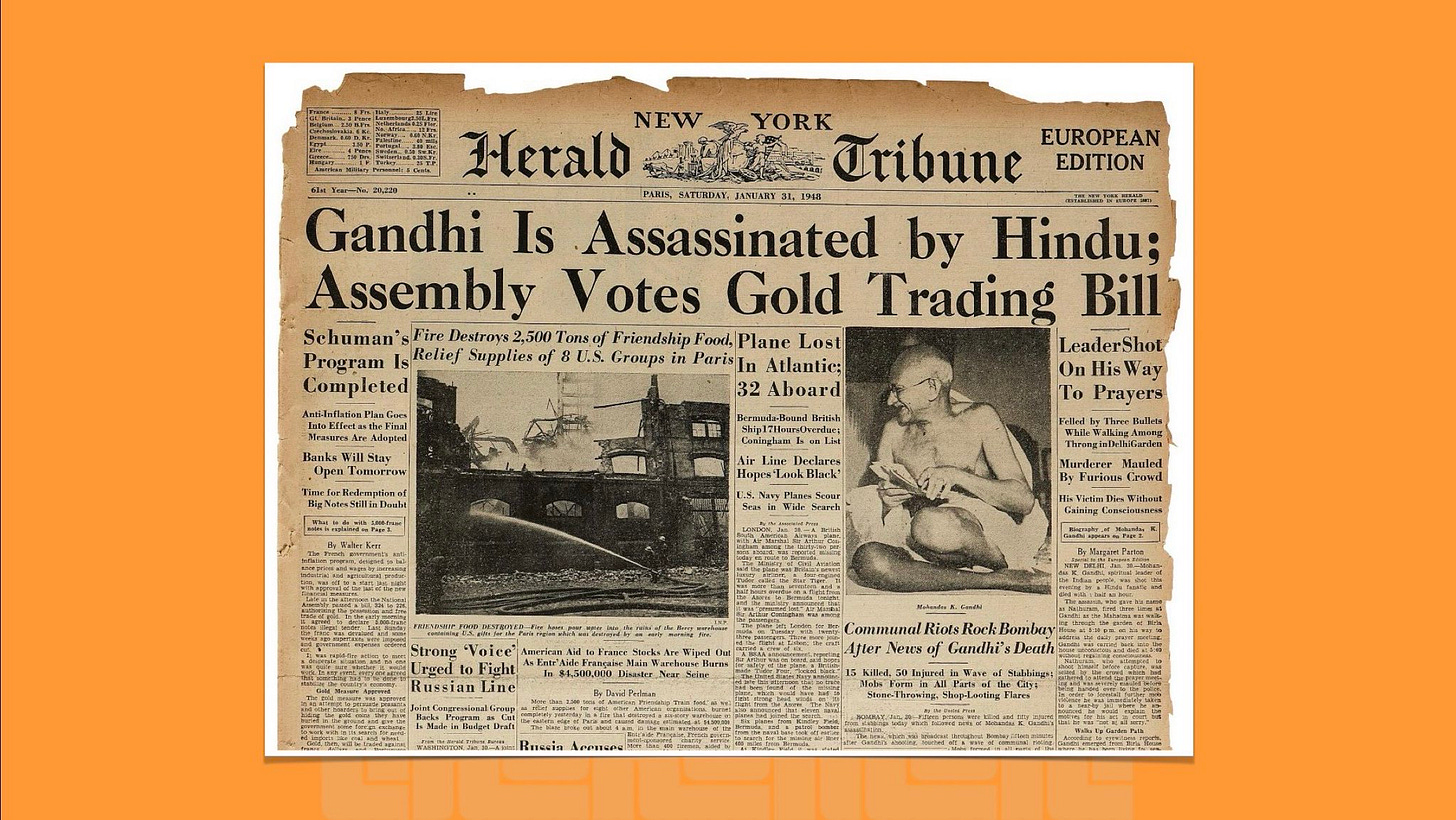



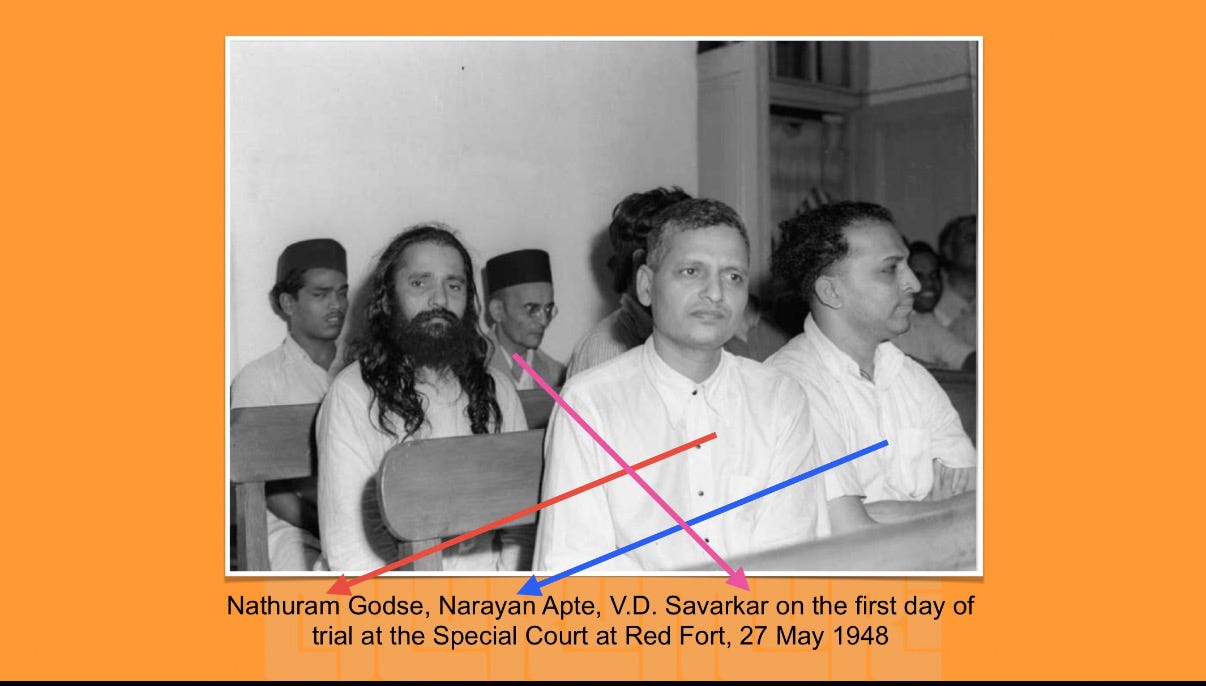
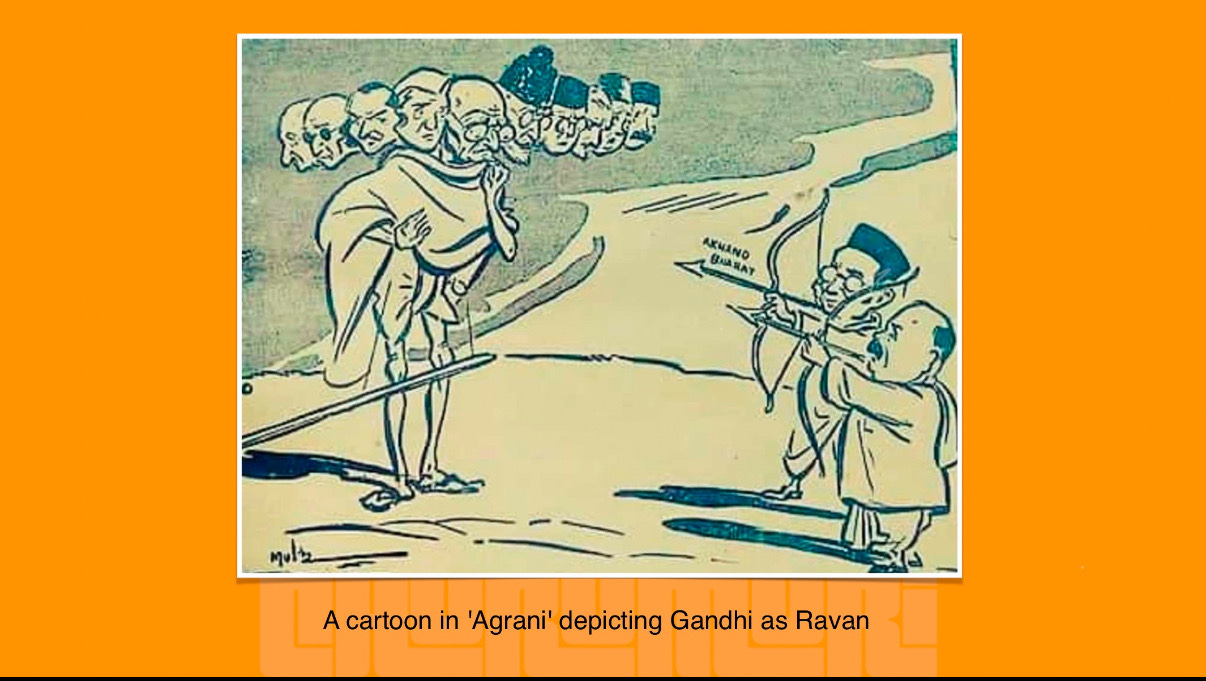
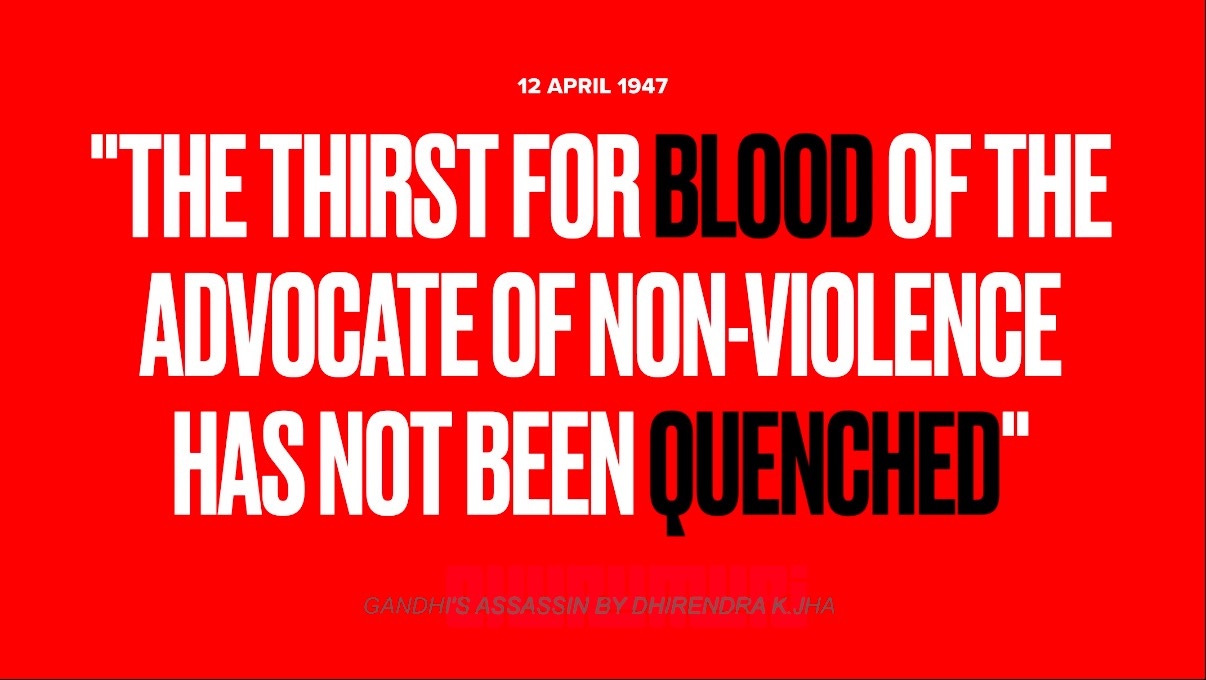

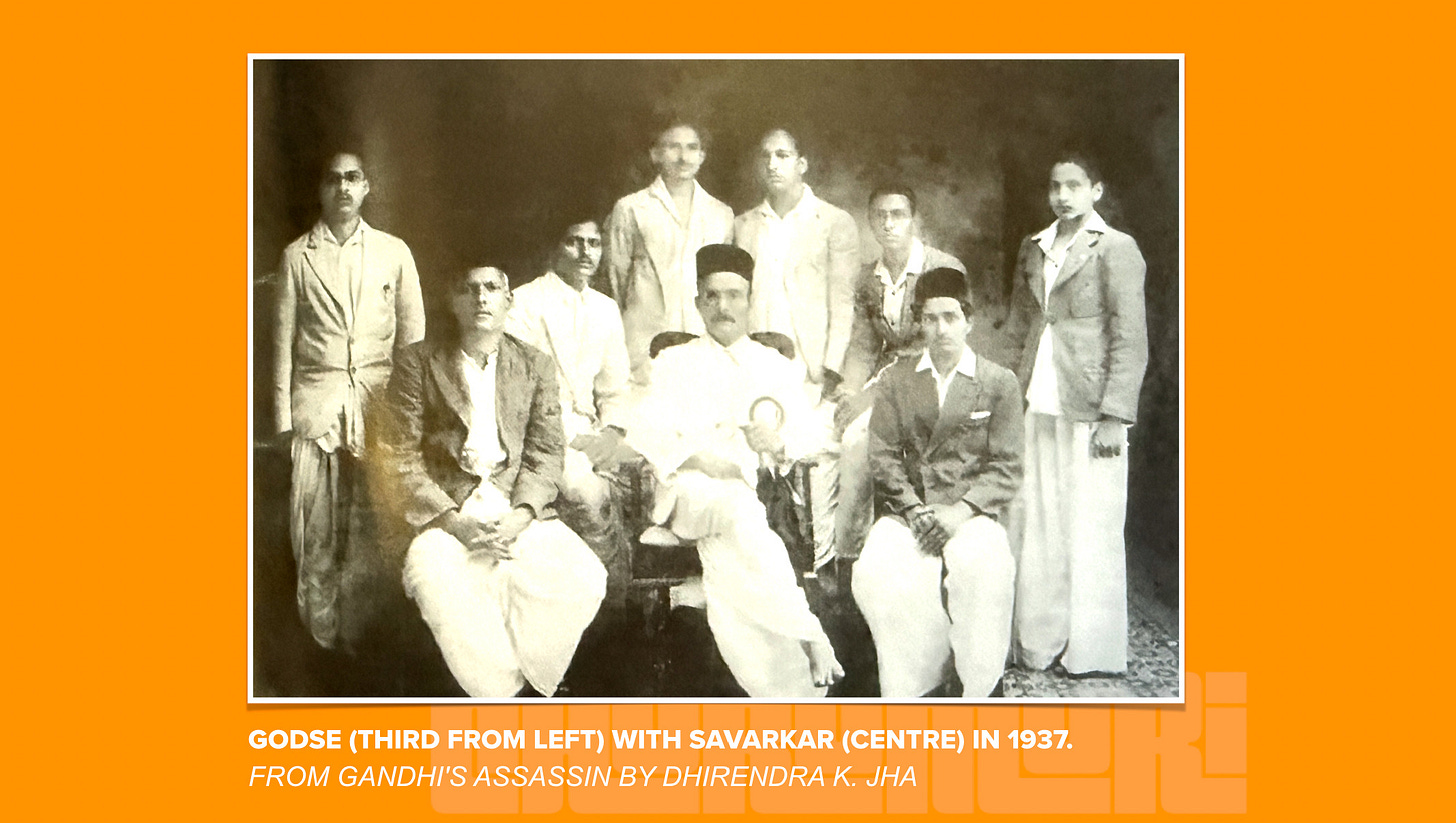

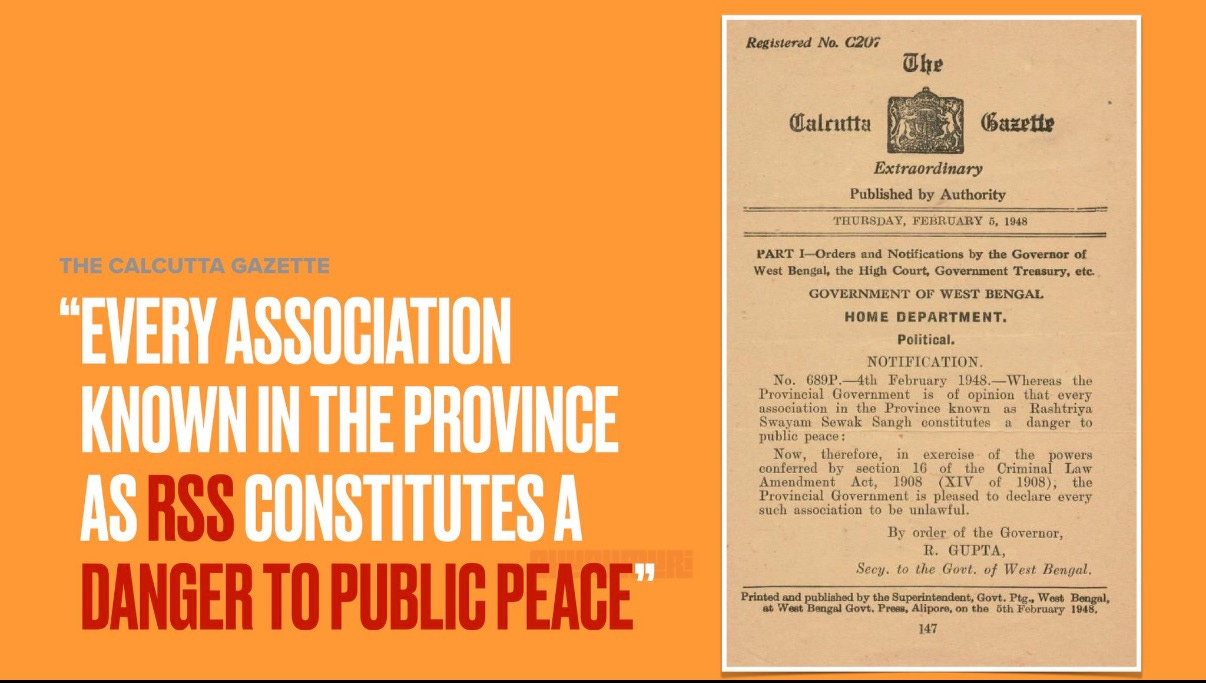
Well written and with details. But the title is a bit confusing with the reference to Gandhi as India's greatest editor in chief. He was editor of Indian Opinion, Young India, Navajivan and Harijan but never editor in chief. More apt would have been a renowned editor.
What was the fault of Hindus for whom Gandhi did not shed a tear nor sat on fast .You yourself can read that Hindus in masses were killed in Kerala Noakhali in West Punjab but Gandhi never cried or had no comment against Muslims . Rather he said that Hindus should not retaliate . Killing of ordinary citizens is bad for anyone and sympathy should not be selective . You could have added a para that when Gandhi was shot dead hundred of Brahmins belonging to the caste of Godse were massacred in Poona and other cities of then Maharastra .